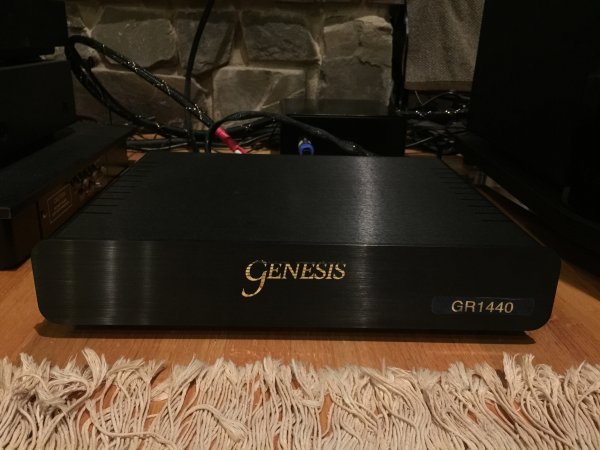Gary Koh's Genesis products are well known for his speakers, his current G1.3/Dragons, much improved descendants of the best speakers from the 80's and still beat most current speakers and the dream speakers for many including myself, are at the forefront of state of the art for the foreseeable future.
Having a big fan of ARC , ML, Krell, CJ , Jeff Rowland ,etc amps , and using it in my systems for the past 20+ years , it's something of a good thing to try out other brands.
Gary knew I was in the market for amps and put me in touch with a pair of his GR1440 monoblocks, and he was smart cuz I'm into big power and I know what it could do.
Just effortless, cruising along at low volume and explosive when called upon on crescendos, sound staging is spectacular, no harshness and liquid , combining the best of tube sound with the solid state!
I have the pleasure of using it for over a month now.
Switching between different mix of brands ,You know its special when the wife and kids noticed the difference right away!
And so was I, totally blown away!
People, if you guys haven't tried Gary's Genesis products, you're missing out !
Having a big fan of ARC , ML, Krell, CJ , Jeff Rowland ,etc amps , and using it in my systems for the past 20+ years , it's something of a good thing to try out other brands.
Gary knew I was in the market for amps and put me in touch with a pair of his GR1440 monoblocks, and he was smart cuz I'm into big power and I know what it could do.
Just effortless, cruising along at low volume and explosive when called upon on crescendos, sound staging is spectacular, no harshness and liquid , combining the best of tube sound with the solid state!
I have the pleasure of using it for over a month now.
Switching between different mix of brands ,You know its special when the wife and kids noticed the difference right away!
And so was I, totally blown away!
People, if you guys haven't tried Gary's Genesis products, you're missing out !






